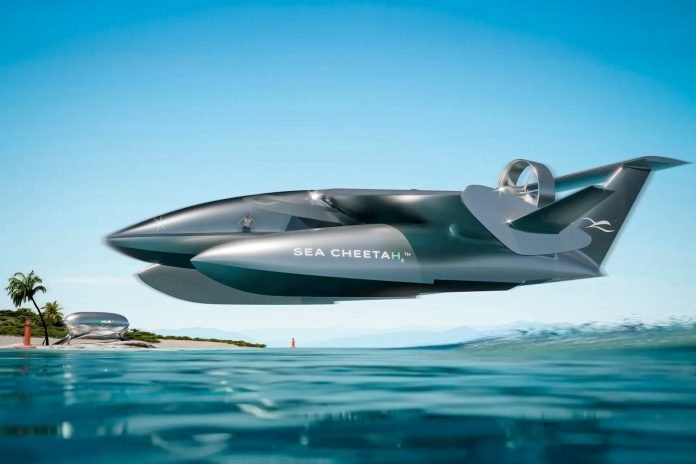Wing-in-ground (WiG) effect aircraft have long been a topic of interest for innovators looking for alternatives to traditional aviation and marine transportation. These unique vehicles, which harness aerodynamic effects at very low altitudes, offer both range and efficiency benefits. Now, the conversation is shifting towards clean energy solutions, and hydrogen is emerging as a potential game-changer. A new startup, Sea Cheetah, is exploring this with a vision to create hydrogen-powered WiG aircraft that could revolutionize coastal and marine transport, offering greater range and efficiency while maintaining zero emissions.
What is wing-in-ground (WiG) effect?
To understand the potential of WiG aircraft, it’s essential to grasp the core principle behind their operation. These aircraft are designed to fly just above the surface—whether water or land—at an altitude within one wingspan of the ground. At such low altitudes, an aircraft takes advantage of the “ground effect.” This phenomenon creates additional lift by compressing air between the wing and the surface, reducing drag and allowing the aircraft to fly further on the same amount of fuel or battery power.
When a WiG aircraft operates at an optimal altitude—about 5% of its wingspan—it can achieve up to 2.3 times the efficiency of a traditional aircraft. This range-extending ability makes WiG vehicles especially interesting in a world increasingly focused on reducing emissions.
Sea Cheetah’s hydrogen vision
Miami-based startup Sea Cheetah is aiming to push the limits of WiG technology by introducing hydrogen as a fuel source. Hydrogen fuel has significantly higher energy density than current battery technologies, promising to extend the range of these low-flying craft far beyond what is possible with battery-electric propulsion.
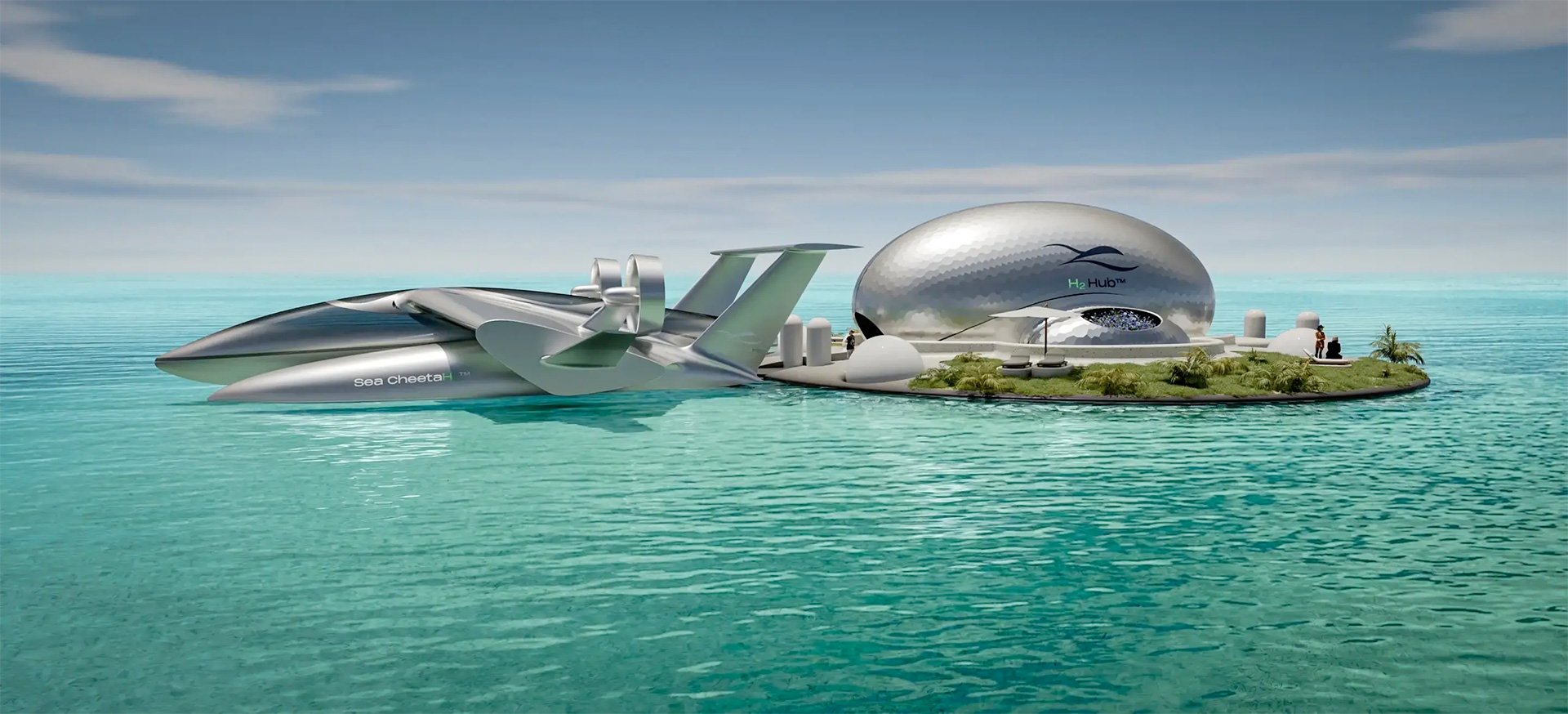
Sea Cheetah envisions building a hydrogen-powered ocean-skimming WiG craft that could serve both cargo and passenger transport markets. The company is also planning to establish a network for hydrogen generation, storage, and fueling in partnership with H3 Dynamics, a company specializing in hydrogen technology.
While Sea Cheetah has yet to release detailed specifications or models for its commercial offerings, early-stage designs show a craft that looks similar to the Airfish-8, a well-known fossil-fueled WiG craft. The Sea Cheetah design includes key differences, such as ducted fan propulsion—likely electric—powered by hydrogen fuel cells. The aircraft’s high-volume pontoons would presumably store the hydrogen fuel, making it possible to significantly extend range.
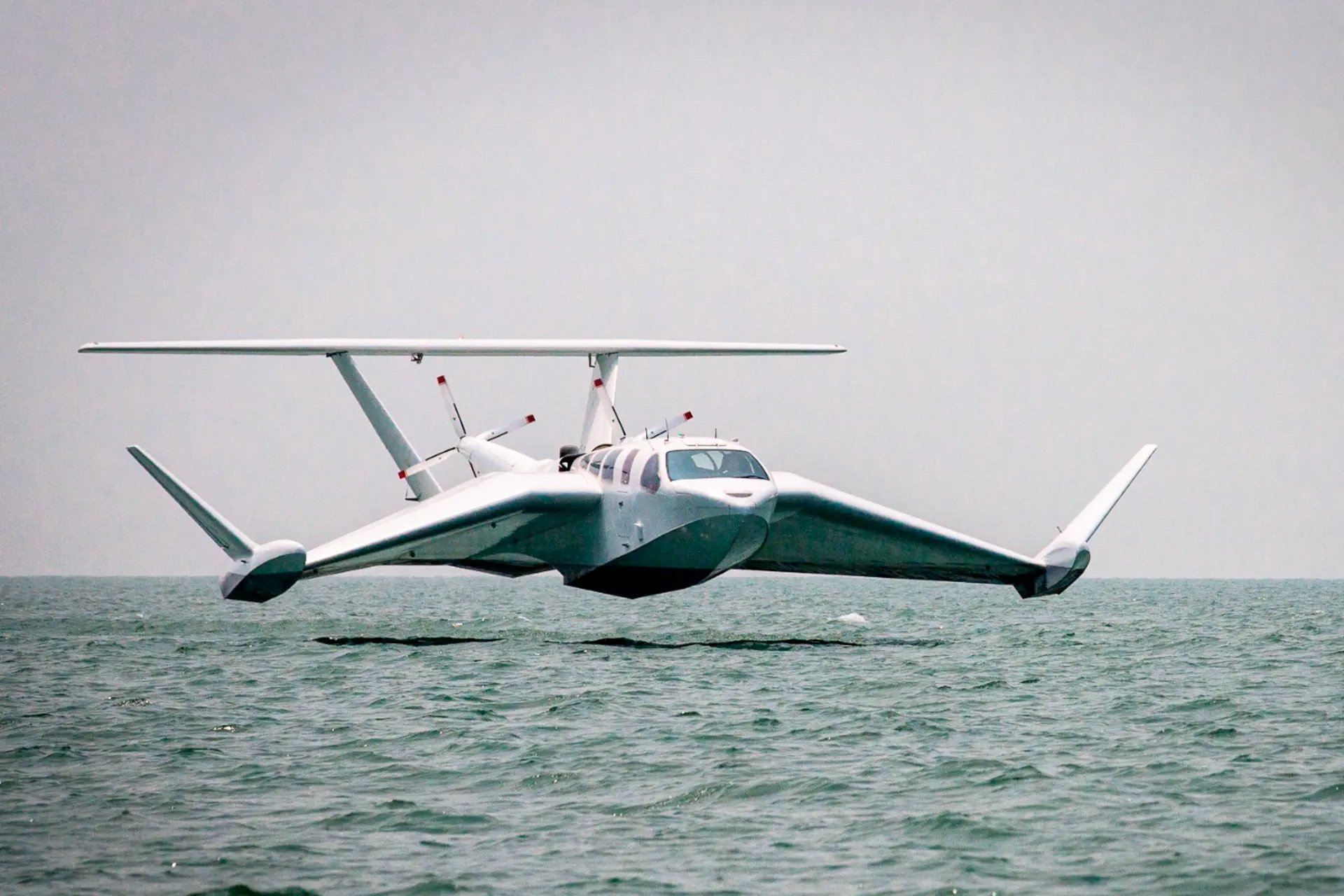
Why WiG aircraft are gaining attention
WiG aircraft offer several advantages over traditional planes and boats. First, they combine speed and efficiency in a way that neither can match. For example, electric boats tend to be relatively slow and have limited range due to battery constraints. WiG aircraft can fly faster than boats and cover greater distances, while still offering zero-emission transport options.
Additionally, WiG craft may not need to comply with the same regulatory hurdles that govern traditional aircraft. In the United States, the Federal Aviation Administration (FAA) typically certifies aircraft, which involves a lengthy and expensive process. However, WiG vehicles like Sea Cheetah’s are classified as marine vessels, not aircraft, by the U.S. Coast Guard. This could dramatically simplify the certification process, potentially reducing the cost and time to market for these types of vehicles.
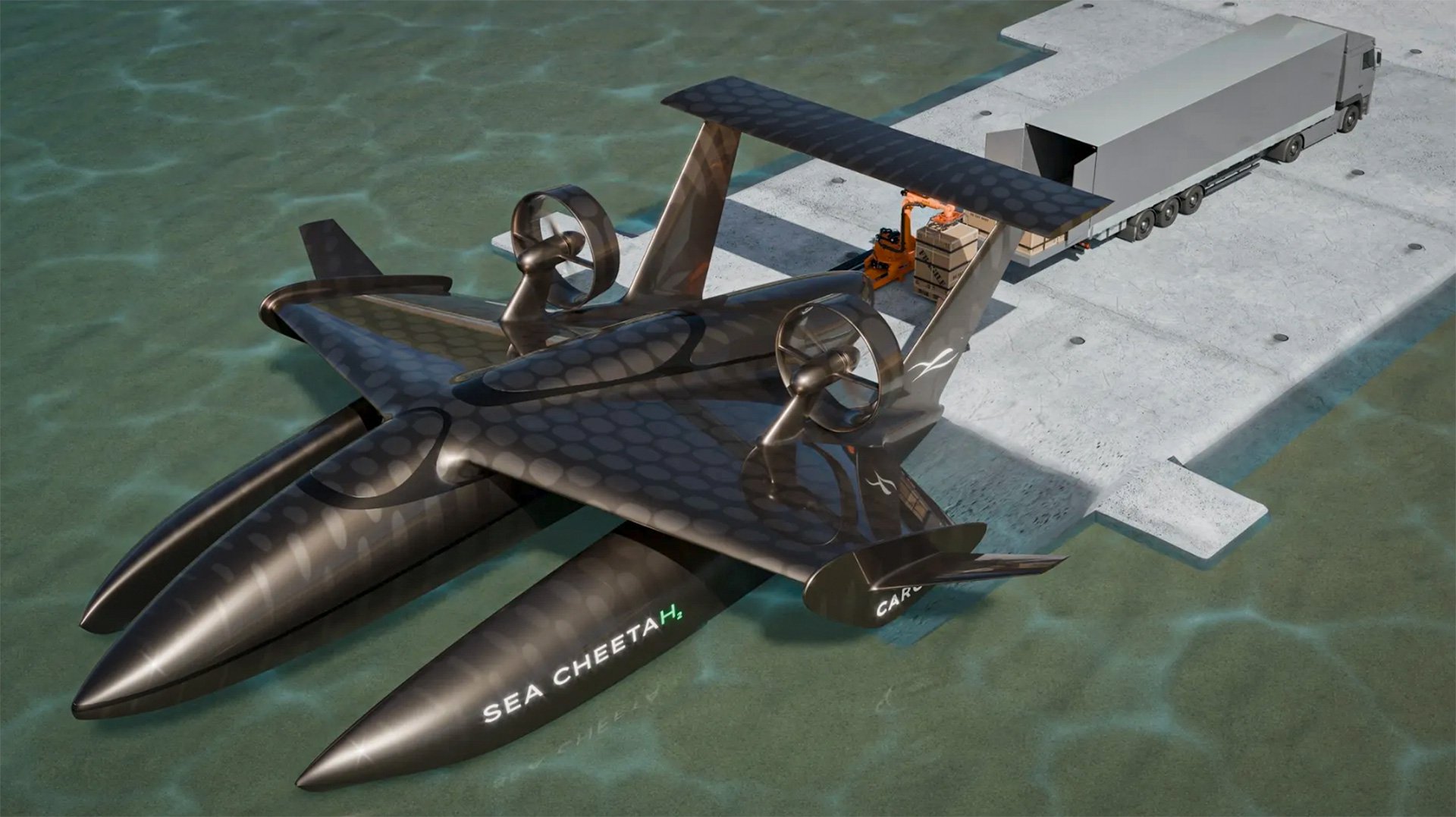
There are operational challenges, however. For instance, WiG craft may have difficulty stopping quickly or navigating congested waterways, as they are subject to marine traffic laws. Nonetheless, the regulatory flexibility is a key factor driving companies like Sea Cheetah and its competitors.
The hydrogen advantage
Hydrogen offers clear advantages over battery-electric propulsion, especially when it comes to range. While batteries are improving, they are still relatively heavy and energy-dense compared to hydrogen. A WiG craft powered by hydrogen could theoretically travel much farther than an electric equivalent.
For context, the Regent Viceroy Seaglider, a battery-electric WiG aircraft currently in development, promises to transport 12 passengers up to 180 miles (300 kilometers) at cruising speeds of 180 mph (300 km/h). By introducing hydrogen fuel, Sea Cheetah’s craft could potentially triple that range, especially if it utilizes compressed hydrogen gas stored in its large pontoons. If the company opts for cryogenic liquid hydrogen—a more energy-dense option—it could double that figure again.
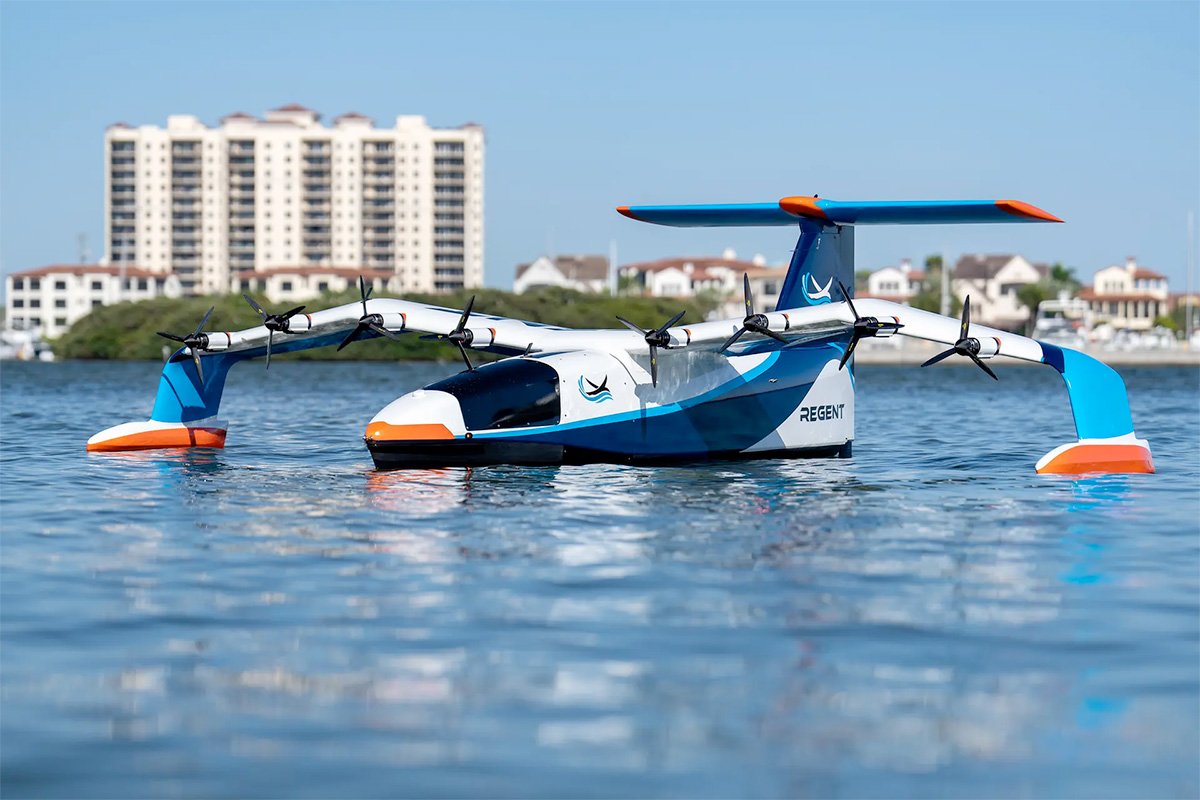
That said, if a passenger needs to cover such long distances, they might prefer a conventional airplane, which typically cruises at speeds more than three times faster than the Regent Seaglider.
At this stage, Sea Cheetah has not specified whether it plans to use hydrogen in combustion engines or fuel cells. Hydrogen combustion engines burn hydrogen directly, producing water vapor as the only emission. However, fuel cells convert hydrogen into electricity to power electric motors, offering potentially higher efficiency and quieter operation. Either option could significantly enhance range and reduce the environmental footprint of WiG aircraft.
Competition in the hydrogen WiG space
Sea Cheetah is entering a competitive space. Regent, another U.S.-based startup, is already well-advanced in its development of the Viceroy Seaglider. While Sea Cheetah is still in its conceptual phase, Regent has flown prototypes and is working on full-scale models.
This could put Sea Cheetah at a disadvantage as it tries to establish itself. Regent’s established presence, along with its early work on battery-electric WiG aircraft, could give it a head start, especially if it chooses to add hydrogen power to its own designs in the future.
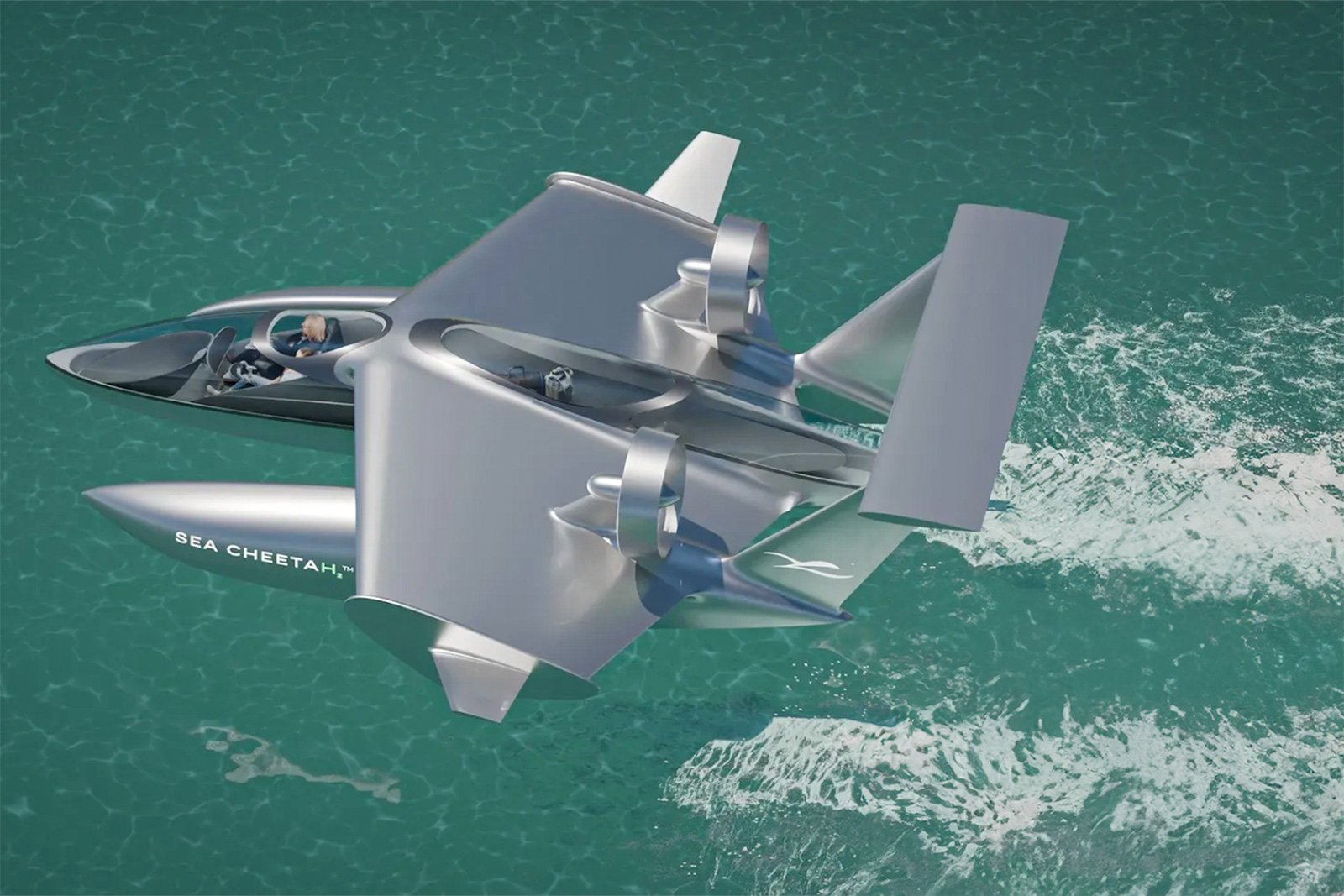
However, Sea Cheetah’s partnership with H3 Dynamics, a specialist in hydrogen technology, could provide it with a critical edge in mastering hydrogen infrastructure and operations. This partnership could help Sea Cheetah to offer not just a new class of WiG craft but also a comprehensive hydrogen network to support long-range operations.
Challenges ahead
Despite the excitement around hydrogen-powered WiG aircraft, there are challenges that Sea Cheetah will need to overcome. The first is technological: hydrogen fuel systems, especially in cryogenic liquid form, require complex engineering and stringent safety measures. While hydrogen fuel is clean and efficient, handling and storing it safely can be tricky, particularly for vehicles that operate so close to the water.
There are also economic hurdles. While hydrogen fuel cell technology has been used in other sectors, such as automotive and aviation, it is still in the early stages of commercialization. The costs of building the necessary infrastructure for hydrogen generation, storage, and fueling are high, and the market for hydrogen-powered vehicles is still relatively small.
Finally, public perception and adoption of hydrogen-powered transport will play a significant role. As hydrogen technology becomes more widespread and trusted, it will likely become easier for companies like Sea Cheetah to find customers. But until then, the road—or rather, the sea—might be a bit bumpy.
Source: Sea Cheetah

